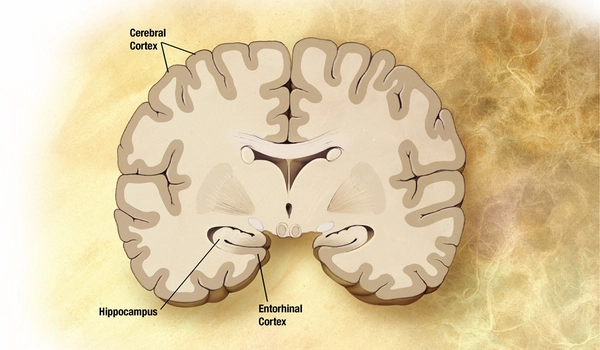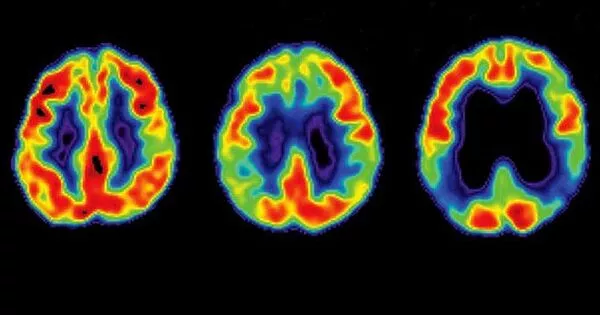Alzheimer’s disease is a complicated neurodegenerative condition in which beta-amyloid plaques and tau protein tangles accumulate in the brain. The immune system, particularly T cells, contributes to the brain’s reaction to pathological alterations. In an Alzheimer’s disease model, scientists discovered that a subgroup of CD8+ T lymphocytes in the brain reduces microglial activation and restricts disease pathology.
Alzheimer’s disease, a neurological disorder characterized by progressive cognitive decline, including memory loss, affects up to 5.8 million Americans today. Protein aggregates made up of beta-amyloid or other proteins occur in the brains of Alzheimer’s patients. These beta-amyloid plaques appear to be a major cause of the disease. Scientists at St. Jude Children’s Research Hospital discovered a subpopulation of immune cells that appear to inhibit the creation of beta-amyloid plaques, as well as the critical proteins involved in the process. Nature Immunology published the findings today.
“People typically think of the immune system as being involved in defense from bacterial or viral infection, though there is growing interest in the role of the immune system in neurodegenerative diseases,” said co-first author Jordy Saravia, Ph.D., St. Jude Department of Immunology. “We uncovered an important immune cell communication axis that is protective in an Alzheimer’s disease model.”
Our paper is the first to demonstrate that a subpopulation of CD8+ T cells can be protective in a mouse model of Alzheimer’s disease. Moving forward, we may be able to extend this work to find an effective intervention for neurodegenerative diseases.
Wei Su
Microglia are immunological cells in the brain that are responsible for the removal of beta-amyloid plaques. Microglia may lose their ability to clear these plaques as Alzheimer’s disease progresses, instead producing inflammatory mediators that may increase beta-amyloid plaque formation. The St. Jude researchers discovered that increasing another type of immune cell called CD8+ T cells is critical for slowing this process by interacting with microglia. In turn, this connection proved critical for limiting beta-amyloid accumulation and preserving cognitive capacities in a mouse model of the disease.
“Our paper is the first to demonstrate that a subpopulation of CD8+ T cells can be protective in a mouse model of Alzheimer’s disease,” said co-first author Wei Su, Ph.D., St. Jude Department of Immunology. “Moving forward, we may be able to extend this work to find an effective intervention for neurodegenerative diseases.”

Immune cells’ opposing roles in Alzheimer’s disease
Previous research has revealed that T cells and other immune system cells play intricate roles in Alzheimer’s disease. Researchers employing various experimental settings, in example, have suggested that some T cells with inflammatory activities exacerbate the condition. However, the St. Jude researchers discovered that CD8+ T cells with suppressive properties accumulate in the brains of both mice models and Alzheimer’s disease patients, indicating that T cells play a multifaceted function in this disease.
“We showed that CD8+ T cells can play a protective role against Alzheimer’s disease pathogenesis, although there is also evidence for a contributing role,” said corresponding author Hongbo Chi, Ph.D., St. Jude Department of Immunology. “Our results demonstrate the need to better understand these complex neuro-immune interactions to improve outcomes for this neurodegenerative disease.”
To understand how T cells were delaying symptom progression in their Alzheimer’s disease model, the St. Jude group searched for the most abundant molecular interaction between CD8+ T cells and the microglia. They found a protein on the surface of CD8+ T cells, CXCR6, interacts with the protein CXCL16 expressed by microglia.
A molecular handshake slows Alzheimer’s disease
The two surface proteins, CXCR6 and CXCL16, essentially performed a handshake between the two cells, communicating in both directions. Just like the firmness of a human handshake can convey information, so can the interaction of these two proteins on the outside of their respective cells.
“We found CD8+ T cells use CXCR6 to interact with CXCL16 from microglia,” Chi said. “Moreover, CD8+ T-cell accumulation, localization and function in the brain are regulated by CXCR6.”
The scientists determined how the handshake occurs and delays the onset of Alzheimer’s disease-related pathologies. The CD8+ T cells first move next to the microglia, which are localized next to the beta-amyloid plaques. Then, the CD8+ T cells use the handshake to signal to the microglia to stop causing uncontrolled inflammation, which, in turn, slows plaque growth and symptoms in the mouse models.
The mice acquired greater Alzheimer’s disease-related symptoms when the scientists removed the gene encoding the CD8+ T cell protein CXCR6. This was due in part to the fact that CD8+ T lymphocytes lacking CXCR6 did not aggregate in the brain near the microglia or plaque location. These cells also did not develop the necessary inhibitory activity. As a result, interfering with the CD8+ T cell’s ability to conduct the handshake stopped it from providing protection against Alzheimer’s disease symptoms.
“We have two major findings,” Chi explained. “One is the crucial role of CD8+ T cells in maintaining homeostasis of the brain, thereby providing a protective role in Alzheimer’s disease.” Homeostasis is the process of maintaining a system’s stability. In this situation, CD8+ T lymphocytes try to reduce the damage produced by microglia malfunction and Alzheimer’s disease-related plaques.
“The other major finding is identifying the central importance of the T cell protein CXCR6 for CD8+ T-cell accumulation and function in the brain,” he said. “We really need to improve our understanding of these neuro-immune interactions.” Only by comprehending this fundamental biology will we be able to develop the science and discover new treatments.”















